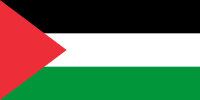
Photo from wikipedia
Abstract Rural communities in the inland areas of Northern Sweden have long suffered from a steady population decline as young people, particularly women, have moved to the growing urban areas… Click to show full abstract
Abstract Rural communities in the inland areas of Northern Sweden have long suffered from a steady population decline as young people, particularly women, have moved to the growing urban areas for education/employment. However, in recent years, alongside strategies for survival relating to tourism/hospitality industry, refugee reception has emerged as a strategy for survival whereby these rural municipalities seek to staunch the downward spiral of decline by accepting refugees in the hope that this will provide not only job opportunities but also support for local services. Using thematic analysis, we focus on media representations of rural refugee reception in small municipalities Northern Sweden and aim to contribute to an understanding of how spatial and social relations are reproduced through these representations; to understand in how ‘the rural’ is constructed in relation to power relations such as race and gender and how these interact with a more explicit spatial power dimension. We are interested in understanding rural refugee reception as a contested hope for the future – a strategy for survival. Our analysis shows that the media highlight the stories of how the municipalities set their hopes on refugee reception to ‘save’ the place not only by bringing in new, younger inhabitants, but also employment opportunities. However, it also shows that refugee reception may become merely a short-term, temporary solution and not something that challenges or changes the more general migratory patterns in Sweden.
Journal Title: Journal of Rural Studies
Year Published: 2021
Link to full text (if available)
Share on Social Media: Sign Up to like & get
recommendations!